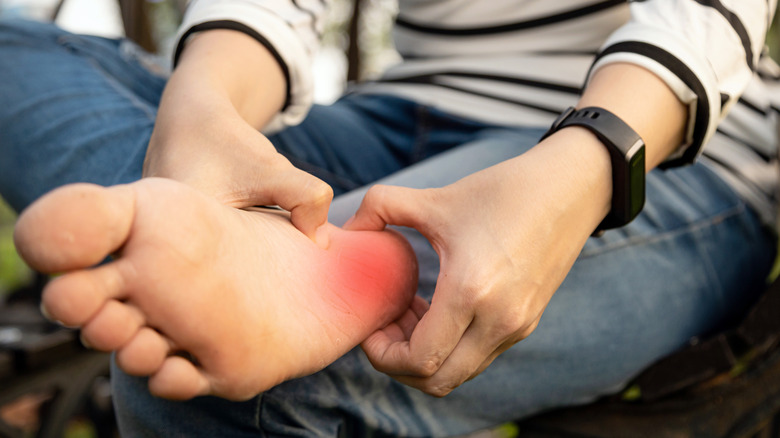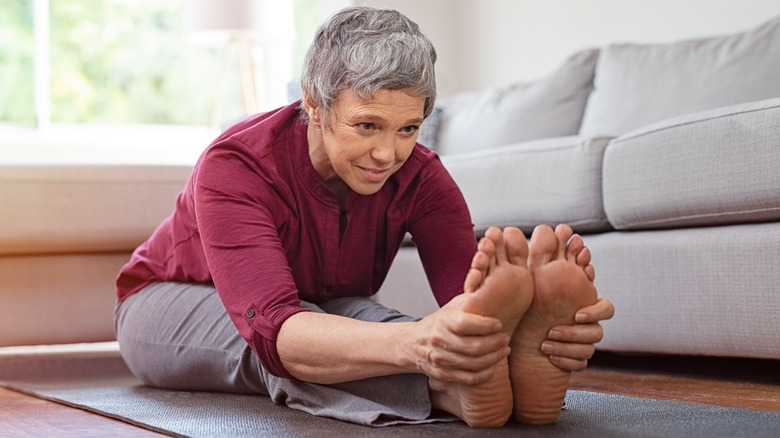What You Should Do When You Deal With Plantar Fasciitis
One in 10 people are estimated to be affected by plantar fasciitis at some point during their lives, according to research published in American Family Physician. Both physically active individuals, as well as those who live a sedentary lifestyle, are susceptible to the condition. With roughly 2 million patients treated for plantar fasciitis annually, the condition is characterized by heel pain (via the American Academy of Orthopaedic Surgeons). This pain can be attributed to inflammation of the plantar fascia ligament, which runs the length of your foot and is responsible for arch support. Excessive strain on the plantar fascia can lead to tearing, which is what ultimately causes it to become inflamed.
Having tight calf muscles, high arches, or engaging in repetitive impact activities (such as running regularly) can all increase risk of plantar fasciitis, reports the American Academy of Orthopaedic Surgeons. The predominant symptom is pain in the bottom part of the heel. Those with the condition often experience this pain when first getting out of bed, after stretches of inactivity, or an increase in pain immediately following exercise.
At-home treatments for plantar fasciitis
It's important that cases of plantar fasciitis be examined by a doctor in order to rule out any underlying causes of foot pain (per the American Academy of Orthopaedic Surgeons). With proper medical treatment, 80% of patients see improvement in their symptoms within one year's time, reports American Family Physician. In addition to seeking treatment, here's what you can do at home when dealing with plantar fasciitis.
At the top of the list is rest. Experts at Monroe Foot & Ankle Care say it's important to refrain from high-impact sports and exercises that could potentially worsen the condition. If you're craving some form of physical activity, opt for yoga, swimming, or cycling over activities that involve jumping or running. Don't forget to stretch, either. By focusing on areas such as the calves, ankles, Achilles tendon, and feet, you can help stretch away some of the pain and discomfort.
If you find you're in need of additional pain relief, short-term use of nonsteroidal anti-inflammatory medications can be helpful, according to the American Academy of Orthopaedic Surgeons. In addition, try rolling the bottom of your foot back and forth over a cold water bottle up to four times daily for periods of 20 minutes.


